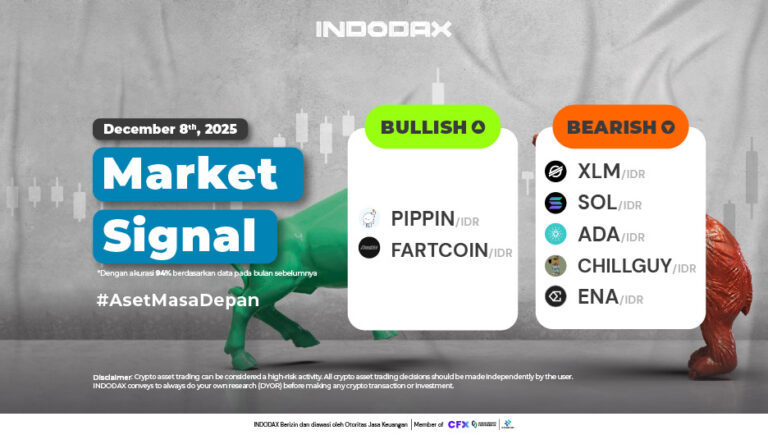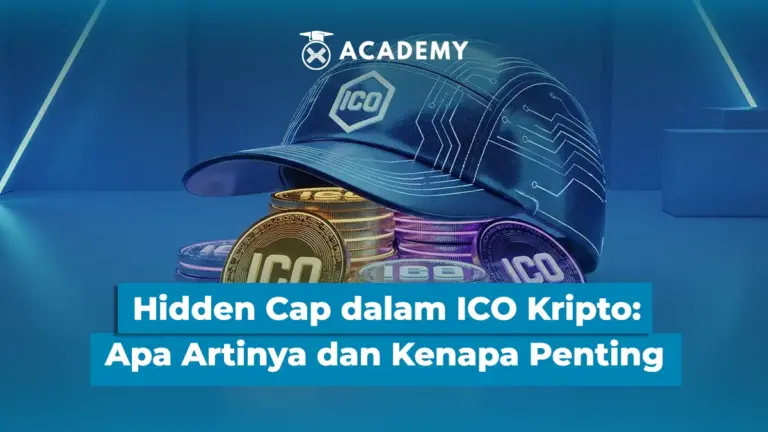Ethereum is a blockchain platform that supports smart contracts. Among the important concepts in the Ethereum ecosystem is “gas”.
Gas is the fee required to successfully make a transaction or execute a contract on the Ethereum blockchain platform. This fee is priced in small fractions of the crypto asset ether (ETH to IDR)-this denomination is called gwei (10^-9 ETH).
Gas fees are used to pay validators for the resources needed to perform transactions. The exact gas price is determined by supply, demand, and network capacity at the time of the transaction.

What is Gas Ethereum
Ethereum gas is a metric used to measure the cost required to make transactions or execute smart contracts on the Ethereum network.
Every operation performed on the blockchain requires a certain amount of computation, and gas is the mechanism for measuring and paying for those computational costs. Gas is calculated in units of gas, but paid for using Ether, Ethereum’s native asset.
Gas fee itself plays an important role in the Ethereum network as it serves as an incentive for miners who verify and add transactions to the blockchain. Miners receive gas fees as compensation for their work.
In addition, gas also helps regulate the use of network resources. By charging a fee for each computing operation, gas ensures computing resources are not overused or misused.
ETH Functions and Gas
The concept of incentivizing work paid in fees (gas) was introduced to compensate miners for their work in maintaining and securing the blockchain, in addition to receiving block rewards.
Once the proof–of–stake algorithm launches in September 2022, a portion of the gas fee becomes a reward for staking ETH and participating in validations-the more a user stakes, the more they can earn.
Ethereum validators, who perform the important task of verifying and processing transactions on the network, earn these fees in exchange for staking their ether and verifying blocks.
Gas fees rise and fall according to the supply and demand for transactions-if the network is congested, gas prices can be high. Conversely, gas prices can be low if there isn’t much traffic.
Gas Pricing Mechanism
Transaction fees on the Ethereum network, also known as gas fees, are fees that users pay to make transactions or run smart contract on the Ethereum blockchain.
Gas is used to pay validators for the computational resources they use to process and validate transactions. Gas fees are calculated in units of gwei eth, which is a small fraction of Ethereum’s native asset, Ether (ETH).
Please note, there are several factors that affect the fluctuation of gas fees, including the following:
- Network Supply and Demand: When the Ethereum network is congested with many transactions to process, gas fees tend to rise. Conversely, when the network is less busy, gas fees are usually lower.
- Transaction Complexity: The more complex the transaction or smart contract being executed, the more gas is required to process it. Simple transactions, such as sending ETH, require less gas compared to the execution of complex smart contracts.
- Ether (ETH) Price: The price of gas in gwei remains constant, but the overall cost in fiat currency can fluctuate as the price of ETH changes in the market.
- Transaction Prioritization: Users can offer priority fees (tips) to validators to speed up the processing of their transactions. The larger the tip given, the faster the transaction is processed, which in turn may increase gas fees during periods of high demand.
- Network Changes and Protocol Updates: Updates to the Ethereum network, such as a switch to a proof-of-stake consensus mechanism or changes in the gas fee setting algorithm, can also affect gas fees.
Ethereum Virtual Machine (EVM) and ETH Gas
As a platform and system, Ethereum is designed to be used by others to create more use cases for blockchain and crypto assets.
For this reason, Ethereum is often referred to as the Ethereum Virtual Machine (EVM) because applications can be created and run on it. EVMs are essentially large virtual computers, like applications in the cloud, that run other blockchain-based applications on them.
Many decentralized applications, crypto assets, and tokens have been created using EVMs. Since the Ethereum blockchain is part of EVM, crypto assets built on top of it require gas fees.
For example, a popular token built on the Ethereum blockchain is DAI. Since it uses the Ethereum blockchain, users need to pay gas fees in gwei to make transactions on the network.
Concerns about Gas Costs
Initially, gas fees were a product of the gas cap and the gas price per unit. In August 2021, Ethereum changed its calculation for gas fees to use a base fee, which is a fixed fee for transactions set by the network, the units of gas required, and a priority fee.
The priority fee is a tip to validators who vote on transactions-the bigger the tip, the more likely your transaction will be processed faster.
Gas Calculation on Ethereum
EIP-1559 increases the complexity of the Ethereum gas fee market compared to the previous approach that used a price auction system.
Currently, users must consider a variety of variables, including base fees, priority fees, and max fees.
Gwei as ETH Denomination
Gwei is the smallest denomination of ETH which is equivalent to 1/1,000,000,000 of 1 ETH (1 ETH = 1,000,000,000 gwei). All transaction fees on the Ethereum network are measured in gwei.
By using gwei as a unit, users can easily understand the relative value of transaction fees.
For example, smaller transaction fees may be expressed in a few gwei, while higher transaction fees may be in thousands or tens of thousands of gwei.
Ether has a high value and wide decimal range so using gwei helps avoid long and complicated numbers when expressing transaction fees. It makes communication and financial planning more efficient in the Ethereum ecosystem.
The use of gwei as the standard unit for transaction fees ensures consistency in communication and reporting across the Ethereum network.
It helps users, developers, and related service platforms to operate more effectively and structured in terms of fees associated with activities on the Ethereum blockchain.
Causes of High Gas Costs
High gas fees on blockchain networks like Ethereum can be caused by several factors. One of the main factors is high network demand.
When many users make transactions or execute smart contracts at the same time, the demand for space in the block increases and hence the gas fees.
The launch of new projects such as Non-Fungible Tokens (NFTs) or Initial Coin Offerings (ICOs) often attract many transactions in a short period of time, which increases demand and gas fees.
The complexity of transactions also affects the cost of gas. Transactions involving complex smart contracts require more computation and memory and thus more gas.
In addition, network policies and updates can also play a role. Updates or hard forks in the Ethereum network can change the gas fee structure. For example, protocol upgrades to improve security or scalability can temporarily increase gas fees.
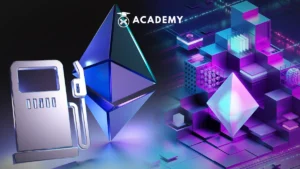
Strategies to Optimize Gas Fees
Reducing transaction fees on blockchain networks like Ethereum can be done with several strategies. One way is by choosing the right transaction time.
Submitting transactions when the network is less busy can also help reduce gas fees. Certain times like midnight or early morning (UTC time) tend to have lower network traffic and thus lower gas fees.
Using gas cost prediction tools can also be very helpful. There are several tools and platforms that can help predict gas costs and choose the best time to transact.
Utilizing layer 2 solutions such as Arbitrum, Optimism, and Polygon can also help.
Layer 2 solutions offer faster and cheaper transactions by moving most transactions off the Ethereum main chain. The use of second-layer solutions can significantly reduce gas fees.
Conclusion
In conclusion, gas fees play an important role in the Ethereum ecosystem, serving as an incentive for miners to process and validate transactions, as well as a mechanism to regulate the use of network resources.
Gas fees ensure that the network remains efficient and avoids abuse. Users should consider gas fees when making transactions, especially when the network is highly congested.
On the other hand, future expectations for gas fees on Ethereum include several initiatives and technological developments aimed at reducing fees and increasing efficiency.
The ongoing Ethereum 2.0 upgrade, with its transition from proof-of-work to proof-of-stake, is expected to improve scalability and reduce gas fees.
In addition, the adoption of Layer 2 solutions such as Arbitrum, Optimism, and Polygon is expected to expand, providing faster and cheaper transaction alternatives.
As technology continues to evolve and protocols improve, gas fees on Ethereum are expected to become more affordable, allowing more users to participate in the ecosystem without being burdened by high fees.
Let’s Buy Ethereum on INDODAX
Now, you understand what ETH (Ethereum) Gas is, from its function, costing mechanism, Ethereum Virtual Machine (EVM), to strategies for optimizing gas costs.
For information, for those of you who are interested in making crypto investments easily, safely, and profitably, from buying ethereum to buying other crypto assets, you can buy them at INDODAX Market.
In addition, to make it easier for you to trade crypto easily and safely, you can download the best crypto application from INDODAX through the Google Play Store or through the App Store right now!
It is important to know that INDODAX is the best and most trusted crypto asset trading platform to date in Indonesia with the support of 6,000,000 members.
As a pioneer of crypto asset trading in Indonesia, INDODAX is committed to providing investors with easy access to the crypto asset market.
It is important to understand as a disclaimer, investing in crypto assets is inseparable from the risks that exist, as well as other types of investments. The risks, among others, are related to fluctuations in the value of crypto assets and the high level of volatility in crypto assets.
Therefore, it is highly recommended to do research first before starting to invest in crypto assets.
So, let’s start investing in crypto assets right now only at INDODAX!
FAQ
1. What is Ethereum Gas?
Ethereum gas is a unit of measurement that represents the computational effort required to complete a transaction on the Ethereum network. It’s the fuel needed to incentivize miners or validators to add transactions to blocks.
2. How does gas incentivize miners or validators?
Miners or validators receive gas fees as compensation for their work in processing and validating transactions on the network. With the transition to proof of stake, a portion of the gas fee is also used as a reward for those who stake ETH.
3. Why can gas fees on Ethereum be so high?
Gas fees increase when there is a surge in demand for on-chain transactions, such as during the highly anticipated launch of NFTs. When many users compete to get their transactions into the next block, the base fee rises due to congestion in the mempool.
4. What is EIP-1559 and how is the gas fee calculated?
EIP-1559 is an update to the Ethereum network that introduces three gas fee components: Base Fee, Max Priority Fee, and Max Fee Per Gas. The Base Fee is determined by the network, the Max Priority Fee is determined by the user, and the Max Fee Per Gas is the maximum amount that users are willing to pay per unit of gas.
5. What is gwei and why is it used in Ethereum transactions?
Gwei is the smallest denomination of ETH, equivalent to 1/1,000,000,000 ETH. Gwei is used because it is easier to interpret and transact in these small units than in ETH fractions, making it more practical to calculate and pay gas fees.





 Polkadot 9.66%
Polkadot 9.66%
 BNB 0.78%
BNB 0.78%
 Solana 4.89%
Solana 4.89%
 Ethereum 2.37%
Ethereum 2.37%
 Cardano 1.22%
Cardano 1.22%
 Polygon Ecosystem Token 2.16%
Polygon Ecosystem Token 2.16%
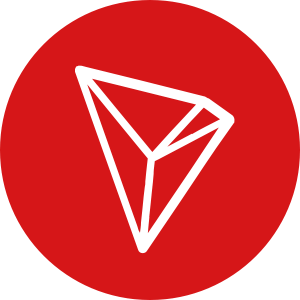 Tron 2.84%
Tron 2.84%
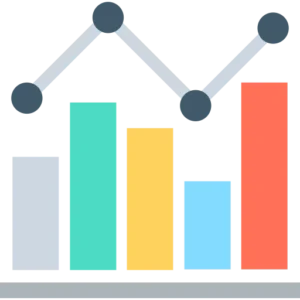 Market
Market